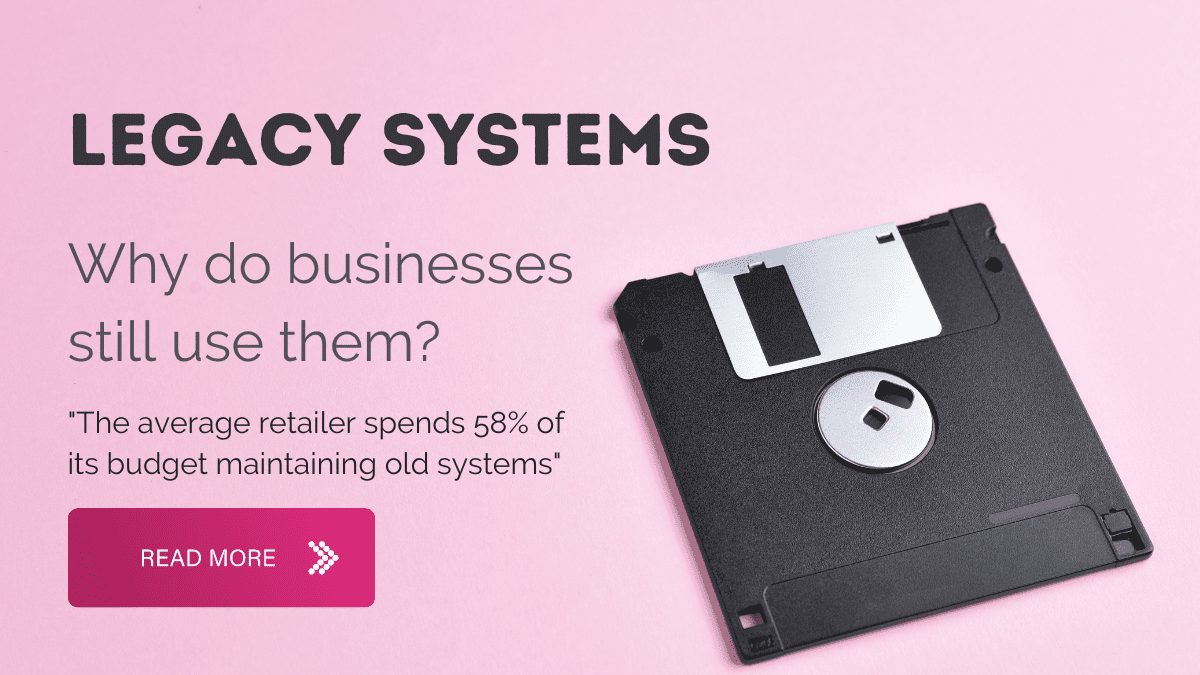Modern contact center software has many benefits. Cloud-based tools let you access data anywhere (enabling virtual contact center), integrate your systems with other tools, and set up automation.
But many businesses still haven’t made the jump to these systems.
Instead, they’re using legacy tools. This software typically performs the role it was bought for.
But it tends to fall behind modern solutions in areas like system integration.
What is a legacy system?
A “legacy system” is an older software system that is generally considered to be obsolete, or superseded by newer approaches. It may perform its original role well, but doesn’t offer the flexibility of new systems.
For example:
- It might not be cloud-first.
- It might not have an open API that lets you integrate with other tools.
- It might rely on outdated hardware.
- It might not receive frequent updates.
This can cause a number of issues, from a loss of productivity to security vulnerabilities.
But the biggest problem is that these tools make it far more challenging to update your systems and processes.
With legacy systems in place, your business may struggle to take advantage of call center innovations.
Here’s an example:
Imagine a contact center that built (or bought) an IVR ten years ago. At the time it was a powerful tool and it still does a passable job of managing calls.
But – it’s a standalone system.
This means the contact center can’t integrate the IVR with its other systems. Adding functionality like virtual queuing or intelligent call routing is either impossible or requires costly and time-consuming development.
The contact can get by at the moment. But as other businesses improve the IVR experience and customers get used to these newer systems, it will start to fall behind.

Then why don’t businesses switch?
For outsiders, the decision to move away from legacy systems can seem like an easy one to make.
But it’s not as black and white for the businesses that use these tools. After all, there’s much more to making the switch than simply signing a different contract.
The biggest barrier is the legacy software itself. Businesses have often invested a lot in these tools. What’s more, they often work well and, shock horror, many people like to use them!
Like many things in business, the reasons that companies don’t switch are complicated. But it typically comes down to three things:
- People are set in their ways.
- Change is expensive.
- Implementing new software is difficult and time-consuming.
Here’s a deeper look at each point.
#1 People are used to the existing system
Legacy software may seem unnecessarily outdated and complex to outsiders.
But the people who use the tools every day are experts at using them. And in many cases, these systems still perform the function they were bought for.
Take the employees who deal with a legacy call center system every day. These people know exactly how it all works and what to do in different situations.
Now imagine the tech team wants to introduce a new tool.
Even if it is objectively easier to use, employees still have to undergo a lengthy adjustment period.
During this time, many employees will find working with the new tool more complicated than using the old one.


#2 Switching to a new system is costly and time-consuming
Switching to new systems can be expensive.
The software itself is usually a significant investment. But you also have to factor in the cost of getting people up to speed.
Introducing new technology means you have to put on extensive training for the people who will use it. Everyone from agents to managers will have to learn the new system. Even your IT team will have to spend time learning the new tools.
You’ll also have to build new processes, create training plans, and potentially hire new people.
And any bumps in the road will affect your ability to offer great support.
| Not making the switch can be costly too |
| According to Cybera, the average retailer spends 58% of its budget maintaining old systems. Meanwhile, decision-makers surveyed by Avanade believe that modernization will cut costs and increase revenue. |
#3 Moving existing data to a new system is challenging
Your legacy tools contain years’ worth of data; moving this to a new system is never easy.
(Especially if there is no way to integrate the existing tool with the new one.)
Imagine a legacy CRM filled with customer data. If you want to update to a modern CRM, you need to get all the information out of the legacy system and into the new software.
This typically means hiring a costly developer to make the transfer.
Fail to do this properly, and you’ll lose access to years of essential customer data – affecting your ability to provide great support.

Businesses *can* get by with legacy systems
The massive challenge of leaving a legacy system behind will have your head spinning if you’re in charge of upgrading your company’s tech.
But, what if you didn’t have to switch from your legacy solution to a new one, yet were still able to integrate legacy systems with current solutions?
Doing this would allow you to keep your existing software while getting the benefits of a modern tool.
The way it works is that you build a wrapper around the old tech.
This maps the existing tool’s database to a modern API – allowing your current software to communicate with newer tools in a language they understand.
It means you can:
- Integrate your legacy tool with modern software.
- Share the data inside your legacy tool with the rest of your system.
- Set up automation involving the old software.
And you can do this for each piece of legacy technology that you still use. It’s the easiest way to bring your contact center into the modern world without having to switch to entirely new technology.
At babelforce, we specialize in helping contact centers set up this type of system. If you want to know more about the process and how it works, then get in touch.





